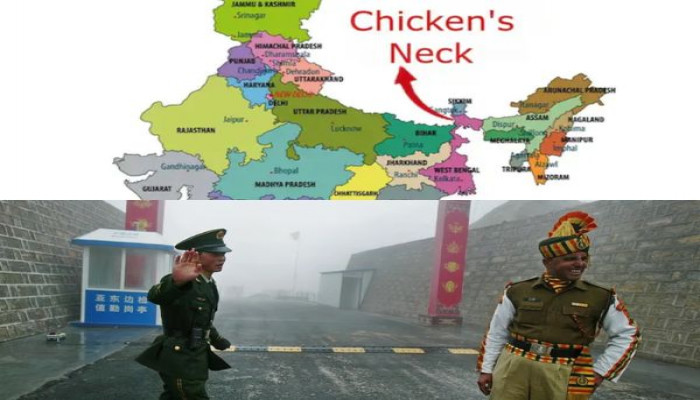India fortifies eastern defences with three new garrisons to secure Siliguri corridor
- In Reports
- 06:42 PM, Nov 07, 2025
- Myind Staff
India has further strengthened its eastern border by establishing three new fully functional military garrisons along the Indo-Bangladesh border at Bamuni near Dhubri, Kishanganj, and Chopra to protect the crucial Siliguri Corridor, often called the "Chicken’s Neck".
According to top intelligence officials, this move is part of a wider plan to close tactical gaps, enhance surveillance, and improve quick response capabilities in one of the most sensitive regions of the country.
The Siliguri Corridor is a narrow 22-kilometre-long strip of land in North Bengal that connects mainland India with its seven northeastern states and is surrounded by Nepal, Bhutan, Bangladesh, and China.
This development comes amid reports of increasing interaction between Bangladesh’s interim Chief Adviser Muhammad Yunus and Pakistan’s military leadership. Yunus reportedly met Pakistan’s Joint Chiefs of Staff Chairman General Sahir Shamshad Mirza to discuss matters related to connectivity and defence cooperation.
Since Yunus took charge after the removal of former Prime Minister Sheikh Hasina, Bangladesh’s foreign policy has visibly changed. The country is now seeking major investments from China and rebuilding ties with Pakistan. Intelligence assessments describe this as a move to "reshape the power balance" in the eastern region, which could have implications for the security of the Siliguri Corridor.
Senior Indian military officials have dismissed any perception of weakness in the region, calling it India’s "strongest defence corridor".
An Army source said, "The Siliguri corridor is under multi-layered security cover. The new garrisons will enhance our quick mobility, logistics, and real-time intelligence integration."
Earlier, the Indian Army Chief had stated, "As far as the Chicken’s Neck is concerned, I see it from a different perspective. It is our strongest region because our entire force deployed in West Bengal, Sikkim and the Northeast can be mobilised there together."
The security of the corridor is overseen by the Trishakti Corps, also known as the 33 Corps, headquartered at Sukna near Siliguri. The formation regularly conducts combat and live-fire drills, including those involving T-90 tanks, to maintain operational readiness in both high altitude and riverine terrains.
Aerial protection in the region is supported by Rafale fighter jets stationed at the Hashimara Airbase in West Bengal, along with MiG aircraft and a BrahMos missile regiment, ensuring a strong balance of offensive and defensive power.
India has also deployed a sophisticated combination of air defence systems in the region, including the Russian-made S-400 surface-to-air missiles, the MRSAM system jointly developed by DRDO and Israel, and the indigenous Aakash missile system. Together, these create overlapping layers of protection against aerial and missile threats from the eastern and northeastern borders.
The S-400 system is specifically aimed at deterring any incursion by Chinese or other hostile aircraft into Indian airspace. The Defence Ministry has also sanctioned Rs 8160 crore for two additional regiments of the Akash Advanced system, which includes upgraded seeker technology and 360-degree targeting capability.
Following Operation Sindoor, the Indian Army has also expanded its drone warfare strength by forming Ashni platoons equipped with FPV and kamikaze drones, and Bhairav battalions designed for precision attacks.
Officials explained that these units are built for rapid movement and close coordination with ground combat forces.
With China’s growing influence in Bangladesh through the Belt and Road Initiative and Dhaka’s warming ties with both Beijing and Islamabad, Indian security agencies view these trends as a potential challenge to regional balance.
"India is alert and has factored in every emerging dynamic," said a senior military planner. "We are not reacting, we are reinforcing."
The government’s recent focus on defence infrastructure and deployment, including Rafale squadrons and BrahMos regiments, signals a clear strategic shift from deterrence to dominance in the eastern region.







Comments